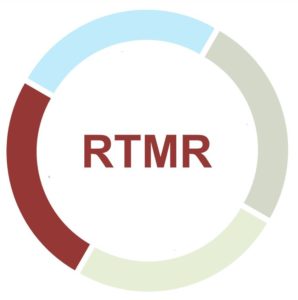
Optimal staffing should occur at all times to ensure a safe environment
MRI staffing in MRI environment
- The MRI environment(s), which includes the general and immediate areas associated with an MRI scanner(s) (zones as outlined below), must be supervised and have controlled access to guard against accidents and injuries to patients and other individuals.1
- An MRI facility is conceptually divided into four zones. 2
- Zone I – Access to general public for example reception or waiting areas
- Zone II – Access to unscreened individuals; for example, change and preparation areas
- Zone III – Physically restricted barrier and consists of areas that have immediate access to the magnet room for example the control room
- Zone IV – Physically confines the magnet room or areas where the 5 gauss fringe field extends
- MRI safety-trained personnel (MRI Personnel) are required to be present at all times during operation and to ensure that unaccompanied or unauthorized individuals are not allowed to enter the MRI environment.1
- MRI Personnel are defined as having successfully completed MRI safety training in a manner defined by the facility’s MRI Medical Director and to a minimum level considered sufficient for MRI Personnel to ensure they and others do not represent a danger in an MRI environment.2
- MRI personnel are further classified by level of safety education2,
- Level 1 MRI personnel are those with training adequate to ensure their personal safety only
- Level 2 MRI personnel are those with MRI safety education to ensure safety of all individuals and facility resources within the MRI environment. An MRI Technologist is classified as a Level 2 MRI safety-trained personnel.
- In order to ensure safe operation and adequate access control to the MRI environment, adequate staffing is necessary.2
- For each scanner within an MRI facility, it is recommended that a minimum of two MRI technologists, or one MRI technologist and one MRI Personnel, should oversee MRI Zones II through Zone IV whenever patients are present.2
- An MRI Technologist must be present at all times during the performance of any patient exam.
- Whenever patients are in the MRI environment, the two MRI Personnel must be able to directly communicate within earshot of each other at all times.2
- For a facility with multiple MRI scanners that share a single Zone III area, it is recommended that there be a minimum of one MRI technologist per scanner and at least one additional MRI personnel.2
Working alone
- Working alone refers to situations where an employee, such as an MRI technologist, is by themselves, cannot be seen or heard by another person and does not have readily available access to assistance.3,4
- This applies to an employee who may go for a period of time without direct contact with a co-worker or is working alone all of the time.3
- No jurisdiction in Canada currently prohibits working alone,4,5 although employers do have a legal duty to provide a safe workplace.3,6
- Depending on the jurisdiction, and in accordance with any legislation and local policies and procedures, MRI technologists may have the right to refuse work that is reasonably believed to be dangerous to their health or safety.5
- Globally, healthcare workers are at an increased risk of violence, aggression and harassment at the workplace.7 Data has shown that the risk is even greater for those in lone-working situations.6
- Due to the nature of MRI procedures (e.g., magnetic environment, isolation, and restricted access), research has shown that MRI technologists who work alone may have concern for their safety and the safety of the patients, including:
- the inability to obtain immediate emergency assistance when needed (e.g., calling a medical code or in the event of a projectile incident),
- the potential for accidents to occur when working alone (e.g., fatigue-induced errors),
- the difficulty of supporting a patient’s emotional wellbeing when in distress (e.g., aggressive behaviour), and
- the effects of safety concerns on an MRI technologist’s mental health (e.g., anxiety).6,8,9
References
- Shellock FG. Reference Manual for Magnetic Resonance Safety, Implants, and Devices. Biomedical Research Publishing Group; 2020. Accessed August 7, 2020. http://www.mrisafetybook.com/
- ACR Committee on MR Safety. ACR Manual on MR Safety: Version 1.0.; 2020. Accessed October 22, 2020. https://www.acr.org/-/media/ACR/Files/Radiology-Safety/MR-Safety/Manual-on-MR-Safety.pdf
- Canadian Centre for Occupational Health and Safety. Working alone – general. OSH Answers Fact Sheets. Published December 12, 2020. Accessed December 14, 2020. https://www.ccohs.ca/oshanswers/hsprograms/workingalone.html
- SafetyLine Lone Worker. Work alone regulations in Canada. SafetyLine Lone Worker. Published n.d. Accessed December 14, 2020. https://safetylineloneworker.com/work-alone-regulations-canada
- Employment and Social Development Canada. Workers working alone at a work place under the control of the employer – 905-1-IPG-059. Published June 2016. Accessed December 14, 2020. https://www.canada.ca/en/employment-social-development/programs/laws-regulations/labour/interpretations-policies/059.html
- Royal College of Nursing. Personal safety when working alone: Guidance for members working in health and social care. Published online 2016. Accessed December 14, 2020. https://www.rcn.org.uk/professional-development/publications/pub-005716
- WHO | Violence against health workers. WHO. Accessed October 26, 2020. http://www.who.int/violence_injury_prevention/violence/workplace/en/
- Dewland TA, Hancock LN, Sargeant S, Bailey RKMA, Sarginson RA, Ng CKC. Study of lone working magnetic resonance technologists in Western Australia. Int J Occup Med Environ Health. 2013;26(6):837-845. doi:10.2478/s13382-013-0159-2
- Pyke LM. Working alone in MRI?: Policies to reduce risk when working alone in the MRI environment. Can J Med Radiat Technol. 2007;38(4):31-36. doi:10.1016/S0820-5930(09)60257-7
Related Posts
-
A thorough screening process is used to assess all individuals entering the MRI environment
-
Un processus de dépistage approfondi est appliqué pour l’évaluation de toutes les personnes entrant dans…
-
Les installations d’IRM sont conçues et construites de façon à réduire au maximum les risques…
